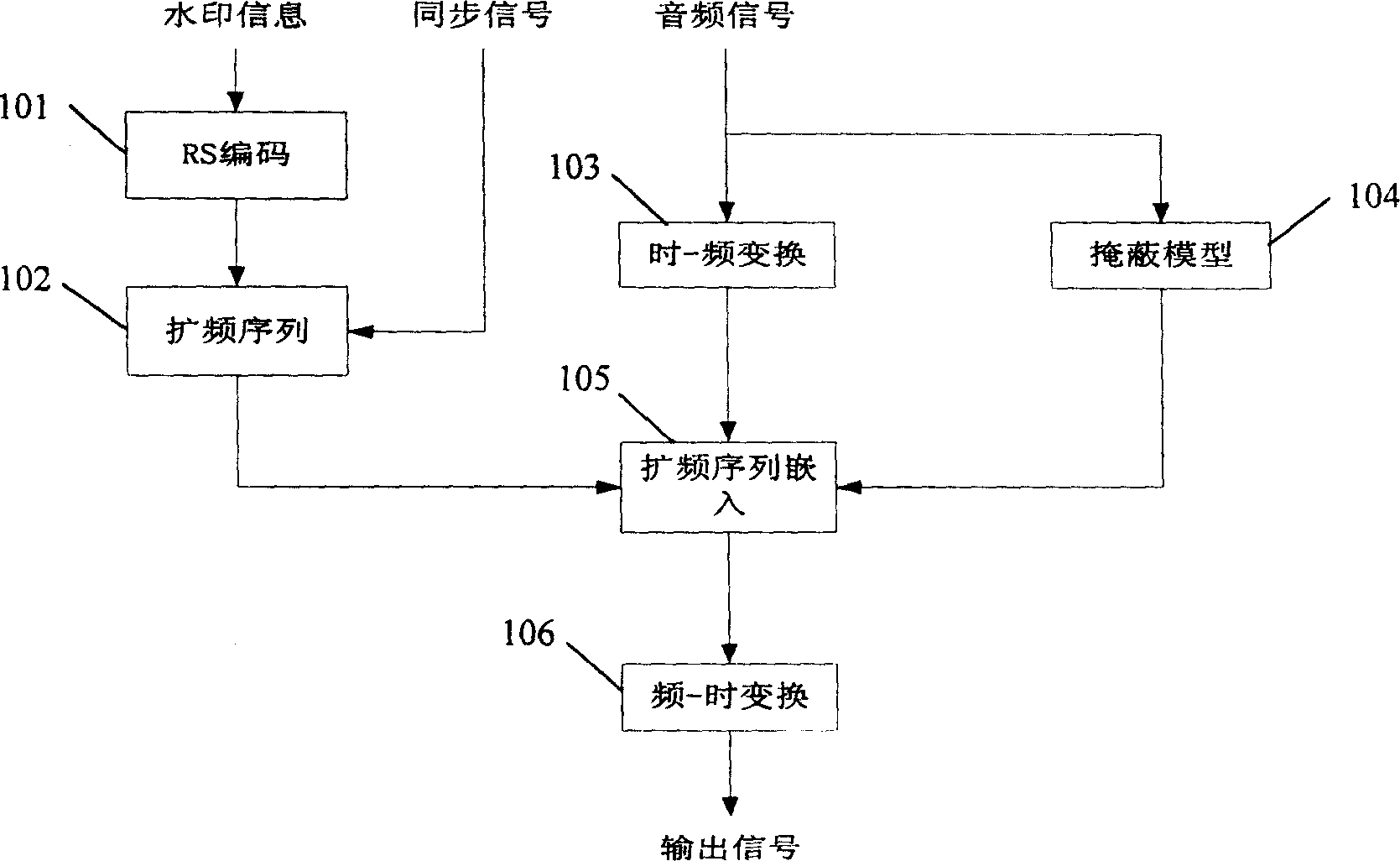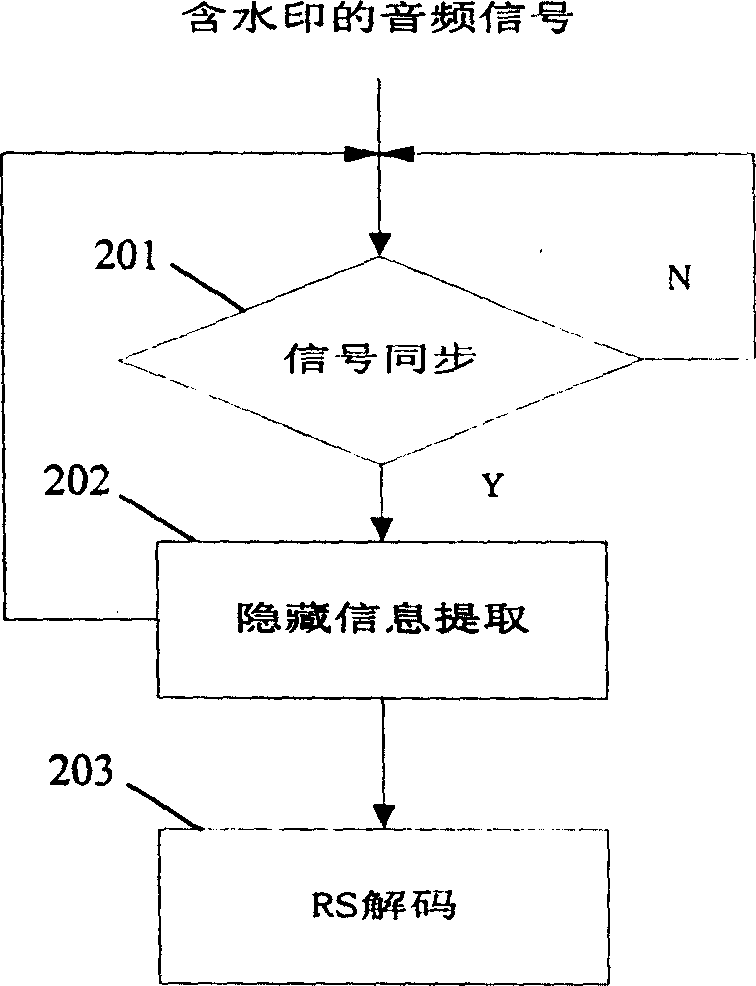Method for automatic synchronizing of audio-frequency watermark
An audio watermarking and self-synchronization technology, which is applied to the shaping network and baseband system components in the transmitter/receiver, can solve the problems of large interference, inapplicability, lack of robust and effective methods, etc., and achieves enhanced robustness. Robustness, the effect of improving the division accuracy
- Summary
- Abstract
- Description
- Claims
- Application Information
AI Technical Summary
Problems solved by technology
Method used
Image
Examples
Embodiment 1
[0034] The self-synchronized audio watermark method provided by the invention includes a watermark embedding method and a watermark extraction method. The algorithm of the watermark embedding method is as follows: figure 1 shown, including the following steps:
[0035] Step 101, perform RS coding on the watermark information.
[0036] In step 102, two different spreading code sequences (PN sequences) are generated and assigned to the watermark information and the synchronization information respectively, called the watermark information PN sequence and the synchronization PN sequence.
[0037] Step 103, performing time-frequency transformation on the input audio signal. That is, first add a Hanning window frame to the audio signal, and then perform FFT with a sliding step of 1 / 4 of the frame length to obtain the spectrum X(n) of the original carrier (audio signal).
[0038] Step 104, according to the input audio signal, calculate the parameter α through the masking model. ...
Embodiment 2
[0069] This embodiment is basically the same as Embodiment 1, except that another synchronization method is adopted.
[0070] In this example, refer to figure 1 , the steps 101, 103, 104, 106 of the watermark embedding method are completely consistent with those in Embodiment 1. refer to figure 2 , step 203 of the watermark extraction method is also completely consistent with Embodiment 1. The steps different from those in Example 1 are described below.
[0071] Watermark embedding method:
[0072] In step 102, a spreading code sequence (PN sequence) is generated for use when embedding watermark information and synchronization marks.
[0073] In step 105, the watermark information and the synchronization information are respectively embedded in different time periods by adopting the method of spreading sequence embedding. The embedding method is to convert X(n) into Y(n) according to formula (1), which is the same as that in Example 1. The difference is that in this emb...
Embodiment 3
[0081] This embodiment is improved on the basis of embodiment 1 (or embodiment 2).
[0082] In order to be able to adapt to some particularly bad situations in shortwave transmission (such as co-channel interference, that is, two or more transmitting stations use the same frequency to transmit different program content), the system can still receive mixed program signals Different watermark information is extracted from the watermark, and this embodiment uses a method including redundant embedding, data reorganization and data credibility measurement.
[0083] 1. Redundant embedding
[0084]In order to further improve the robustness of the watermark information, so that it can still obtain satisfactory results in the same frequency environment, redundant embedding is performed on the watermark data. The specific embedding method is as follows: For a set of watermark information, three spread spectrum sequences are used (same or different) for modulation, assuming that three s...
PUM
 Login to View More
Login to View More Abstract
Description
Claims
Application Information
 Login to View More
Login to View More - R&D
- Intellectual Property
- Life Sciences
- Materials
- Tech Scout
- Unparalleled Data Quality
- Higher Quality Content
- 60% Fewer Hallucinations
Browse by: Latest US Patents, China's latest patents, Technical Efficacy Thesaurus, Application Domain, Technology Topic, Popular Technical Reports.
© 2025 PatSnap. All rights reserved.Legal|Privacy policy|Modern Slavery Act Transparency Statement|Sitemap|About US| Contact US: help@patsnap.com



